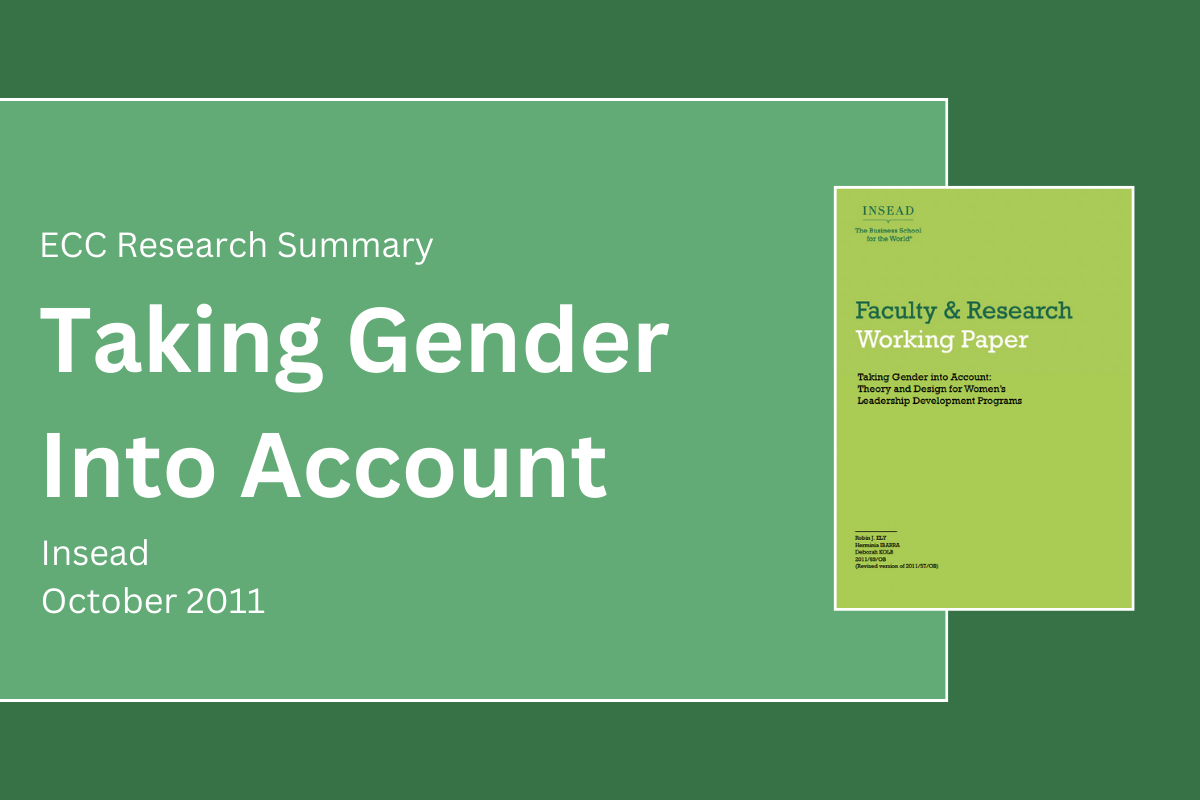When Women Lead and the Outcomes
The Ongoing Gap in Senior Leadership Representation
Insights to help leaders and organisations thrive and drive growth & inclusion.
Geraldine Gallacher Keynote Speaker
Speaker, podcaster, author and master coach.
Our resource hub for working parents, carers and managers navigating work-life balance.
Real stories from leaders driving inclusion & equity in today’s shifting world.
Fortnightly insights on leadership, equity & the future of work. For senior leaders & curious thinkers.
A monthly digest of the shifts shaping how we lead and work.
2 min read
 Phoebe Rees | Research & Impact Manager
:
Sep 1, 2024 12:00:00 AM
Phoebe Rees | Research & Impact Manager
:
Sep 1, 2024 12:00:00 AM
.png)
In 2016, the UK government introduced the HM Treasury Women in Finance Charter, a pivotal initiative aimed at improving gender balance in senior management across the financial services sector. Today, with over 400 signatories covering 1.3 million employees, the Charter is driving accountability and transparency in advancing female representation.
This eighth annual review dives deep into the progress made by signatories, assessing how well they’ve met their gender diversity targets and analysing the actions taken to recruit, promote, and retain women in leadership roles. The data provides valuable insights into how firms are executing the Charter’s principles and highlights areas that still need attention.
Progress Against Targets:How many firms met, missed, or are on track to reach their senior female representation goals and the pace of progress across sectors and firm sizes
Actions Driving Change: Concrete strategies firms are using to recruit, retain and promote women and the role of data-led approaches, accountability and culture change in accelerating progress.
Ambition and Definitions: A review of how ambitious the targets are, including how signatories define “senior management”. As well as the quality, transparency and reporting of progress updates.
Methodology: Analysis includes data from the 205 signatories that signed the Charter in September 2024, by organisations with at least 250 staff, anonymised and aggregated for confidentiality.
This review is a call to action for signatories to benchmark their efforts, reflect on their progress, and continue driving meaningful change. Gender balance isn’t just a fairness issue, it’s a business imperative.
Headline Statistics
Female representation in senior management rose to 36% in 2024, up from 35% in 2023, continuing a steady one-percentage-point annual increase.
Meeting Targets
36% of signatories met or exceeded their stated gender targets in 2024.
A further 44% of firms with targets due in future years say they are on track.
Pace of Change
Despite cumulative progress since 2016, with senior women increasing from ~27% to 36%. The annual pace of one percentage point means gender parity won’t be reached without significant acceleration.
Sector Differences
UK retail banks and insurers continue to lead with relatively higher female representation.
Investment managers and global/investment banks lag behind.
Actions and Behaviours
A broader set of actions beyond recruitment is gaining focus:
82% of signatories are emphasising retention, culture and inclusion practices, not just hiring.
89% gather additional diversity data (e.g., ethnicity, disability, sexual orientation), up from previous years.
Accountability & Transparency
97% of firms place the accountable executive role at executive committee level.
74% report that linking diversity outcomes to executive pay is effective.
88% published an annual progress update, though only 32% included all the required details set by HM Treasury.
Key Themes & Insights
Steady but Slow Progress: Growth in female senior representation, though consistent, is slow, and firms must adopt more strategic, data-driven, and culturally embedded approaches to accelerate change.
Broadening Focus: Firms are increasingly embedding D&I into core business functions, moving beyond recruitment to retention, culture, leadership accountability and structural inclusion.
The Role of Transparency: Publication of updates has improved significantly, but quality and completeness of disclosures remain inconsistent across signatories.
Looking Ahead: 2025 is projected to be a turning point year with more deadlines due and predictive analysis suggesting potential for strong results, if efforts are intensified.
The 2024 Annual Review of the Women in Finance Charter shows meaningful, persistent progress in female representation across the financial services sector. But meeting broader parity goals will require greater ambition, strategic action, and transparent reporting from signatories.
This year’s evidence reinforces that gender balance is not only a fairness issue, it’s increasingly recognised as a business imperative that drives resilience, competitive advantage and sustainable leadership
Click here to learn more about Women’s Development Programmes: 6 Lessons from Designing Women’s Development Programmes
Click here to learn more about Inclusive Leadership: Intro to Developing Inclusive Leaders

The Ongoing Gap in Senior Leadership Representation

3 min read
A Summary of the Workplace Biases Women Face Leadership programmes have become a key component of the development opportunities major...

1 min read
What is Code Switching and how does it impact the workplace? Code Switching relates to the adjustments that individuals do to appease others and...